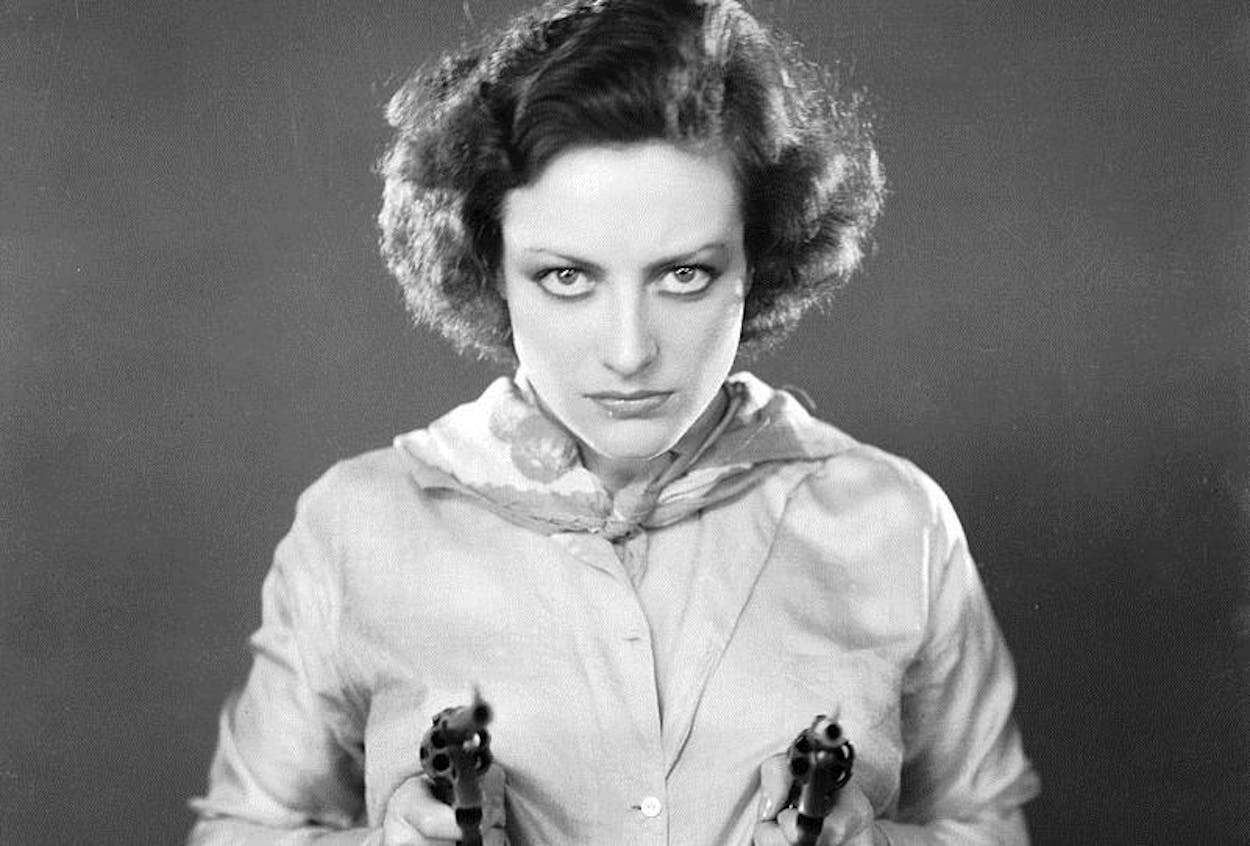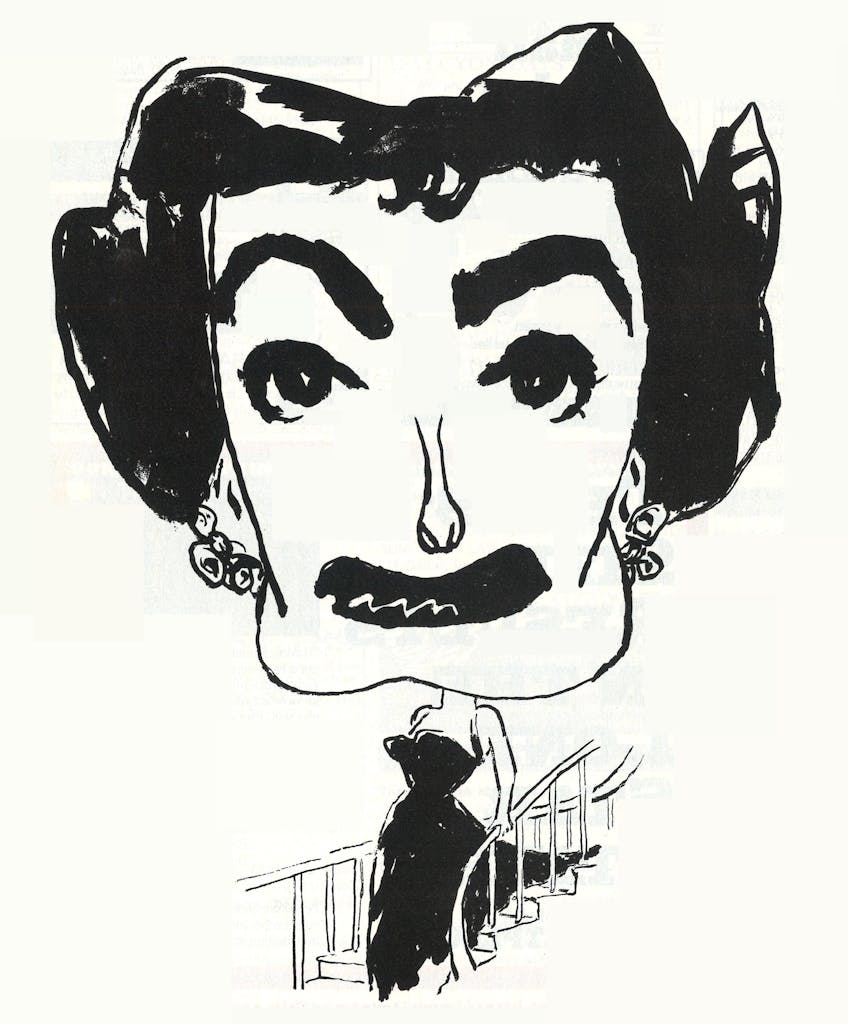All her life, Joan Crawford raised other people’s eyebrows as often as she reapplied her own. From the time she arrived in Hollywood, the temperamental Texan provoked hostility and gossip, and her wide-eyed flapper persona soon hardened into that of a sleek, steely sophisticate. But the arrogance accompanied a massive talent; as Humphrey Bogart once put it, “Joan Crawford, as much as I dislike the lady, is a star.” After her death, her reputation disintegrated even further when her adopted daughter Christina published a horrifying memoir of physical and verbal abuse inflicted by the actress. That was twenty years ago, and ever since, “Mommie Dearest” has been Joan Crawford’s most unforgettable role.
- She was born Lucille Fay LeSueur in San Antonio, probably in 1904; no birth certificate for her exists. She preferred the year 1908.
- In 1925 Metro-Goldwyn-Mayer made her instantly famous by offering $500 to the fan who submitted the best new name for the studio’s starlet. She always hated the winning entry.
- Crawford was only five feet three. A blue-eyed redhead, she hid her freckles with makeup. Her shoulders were so wide that a studio couturier, despairing of reducing them, decided to exaggerate them instead. Padded shoulders became her fashion trademark.
-
![Joan Crawford caricature.]() She appeared in 82 movies. Twenty-three were silents, including The Plumber (1924), in which she appeared nude. She later bought up almost every copy. Her 59 sound films included Grand Hotel (1932), The Women (1939), and Mildred Pierce (1945), for which she won an Academy award.
She appeared in 82 movies. Twenty-three were silents, including The Plumber (1924), in which she appeared nude. She later bought up almost every copy. Her 59 sound films included Grand Hotel (1932), The Women (1939), and Mildred Pierce (1945), for which she won an Academy award. - Crawford’s first three husbands were actors: Douglas Fairbanks, Jr., Franchot Tone, and Phillip Terry. Her fourth was Pepsi-Cola executive Alfred Steele, whose product she habitually spiked and swilled.
- She starred in eight movies with Clark Gable, more than with any other leading man. They also had an off-screen romance. Her archrival, Bette Davis, once sniped that Crawford “slept with every male star at MGM except Lassie.”
- Her legendary feud with Davis began in 1935 when Bette dallied with Franchot Tone, then Crawford’s spouse. Davis’s two Oscars further enraged her. Crawford got her revenge when she was signed by Warner Bros., Davis’s longtime studio. Later, when the two actresses starred in Whatever Happened to Baby Jane? (1962)—the only movie they ever made together—Crawford’s contract proved far more lucrative. She made only five more films before her death in 1977.
- More About:
- Texas History
- Film & TV
- San Antonio



 She appeared in 82 movies. Twenty-three were silents, including The Plumber (1924), in which she appeared nude. She later bought up almost every copy. Her 59 sound films included Grand Hotel (1932), The Women (1939), and Mildred Pierce (1945), for which she won an Academy award.
She appeared in 82 movies. Twenty-three were silents, including The Plumber (1924), in which she appeared nude. She later bought up almost every copy. Her 59 sound films included Grand Hotel (1932), The Women (1939), and Mildred Pierce (1945), for which she won an Academy award.




